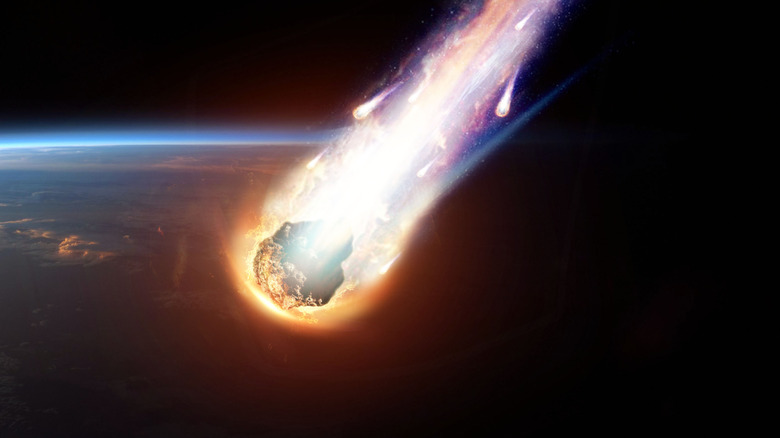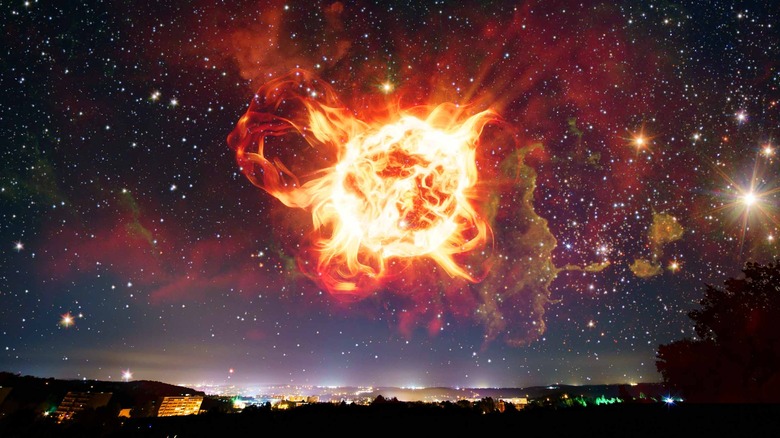A Meteor Exploded Over The Bering Sea With The Force Of 10 Atomic Bombs
On December 18th, 2018, a large meteor fell from the sky and exploded over the Bering Sea. This explosion had a force 10 times the strength of the atomic bomb dropped over Hiroshima in 1945 (via CBC News). These types of events are known as fireballs, and they happen more often than you think.
The term "fireball" refers to a very bright meteor, typically one as bright as Venus in the night sky or brighter (via the American Meteor Society). Venus is typically the brightest object in the sky other than the moon and sun unless a bright fireball streaks by. The main difference between a normal meteor (or shooting star) and a fireball is simply size. Most meteors burn up in the upper atmosphere as they fall to the Earth, and fireballs are often not big enough to make it through Earth's atmosphere, as NASA reports. But, in some rare cases, such as the one that fell over the Bering Sea in 2018, they explode.
The meteor went unnoticed by astronomers for several months
The Bering Sea fireball was not initially noticed by astronomers that track meteors. It was first spotted by the Comprehensive Nuclear Test-Ban Treaty Organization (CTBTO) shortly after it occurred. This organization looks for signs of nuclear missiles but moved on after cataloging the Bering Sea explosion and realizing it wasn't caused by nuclear activity.
It wasn't until three months after CTBTO initially recorded it that meteor expert and professor of physics and astronomy at Western University, Peter Brown, became the first astronomer to notice it. He was reviewing the CTBTO data when he realized that the explosive event was caused by a rare fireball. Brown stated, "It's an unusual event, we don't see things this big very often" as CBC News reports. During this time, the Bering Sea explosion was also added to NASA's Jet Propulsion Laboratory's fireball database (via NASA).
Blasts of this size only happen a few times a century
While meteors frequently tumble through Earth's atmosphere, fireballs the size of the Bering Sea explosion are much more rare. This is because when a meteor hits the atmosphere, the air in front of it begins to compress quickly as the meteor rapidly falls towards the ground at tens of thousands of miles per hour. The compressed air in front of the meteor heats up, causing the meteor to become so hot that it glows and begins burning in the air (via How Stuff Works).
Most meteors are small, burning away until nothing is left in the upper atmosphere. But some fireballs, like the Bering Sea explosion, make it much closer to the surface. These events are extremely rare, however. According to NASA planetary defense officer Lindley Johnson, blasts this large typically only occur two or three times per century (via The Guardian). There is no need to keep a constant eye out for meteors, as the Earth's atmosphere is designed to work as a shield against these falling rocks, as The Irish News points out.


